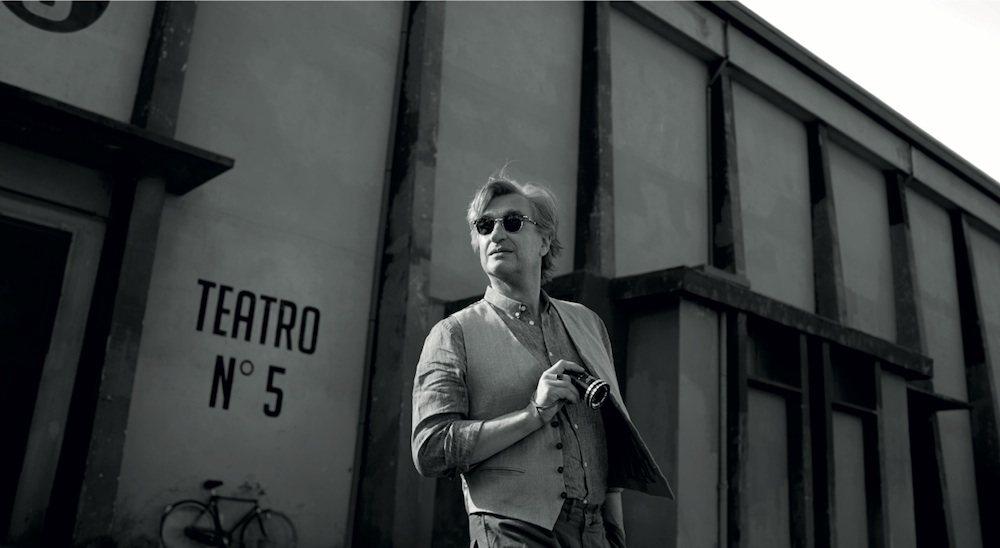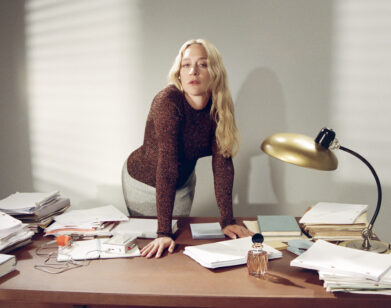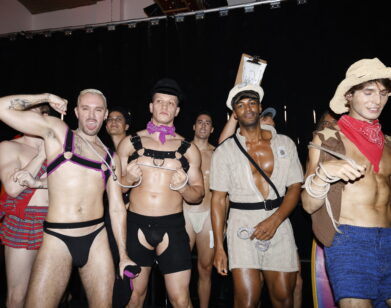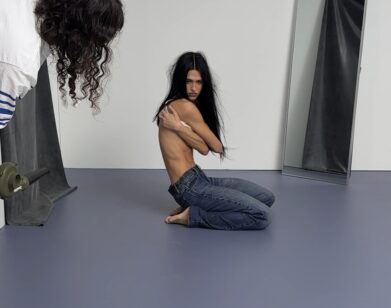Wim Wenders and Persol Celebrate Iconic Italian Cinema

ABOVE: WIM WENDERS WEARING THE CELLOR 1955 IN ROME, JULY 2015. PHOTO COURTESY OF PERSOL.
At Milan Fashion Week, director Wim Wenders unveiled his latest project: a short showcasing a new folding version of Persol’s classic Cellor frames. Titled Vai, Paparazzo! and shot in black and white, the two-minute short takes place on the set of an 1950s Italian film: two young lovers, exquisitely dressed, ride down the street in a convertible while a director watches them from a folding chair, megaphone in hand.
“They gave me this fantastic freedom to play in this fantastic playground—Cinecittá,” explains Wenders at the launch of the film. “They found great young actors that really managed to evoke these actors from the ’50s. That was the greatest fun of all, to find these actors who managed to carry that spirit.”
It might seem like an odd fit at first—an iconic German director producing a film that draws on classic Italian cinema for a decidedly Italian eyewear label—but Wenders has a long relationship with both Persol and the Italian cinematic greats. “I’ve had Persol glasses from the late 1960s,” says Wenders. “I had to buy them repeatedly because they were stolen several times,” he continues.
MIGUEL ENAMORADO: How did your involvement with Persol come about?
WIM WENDERS: They came to me and asked me if I was up for making a little film in the climate of the ’50s and ’60s classic Italian cinema. They told me the story of these glasses—that they are from that period. To evoke the classic period of Italian cinema in a little film seemed like a great, fun thing to do. I had relations to that period. I had known Fellini and I had known Antonioni. I had made a movie with Antonioni and I had visited Fellini in his studios. So, it seemed like something worthwhile doing. You bring yourself to that mythical cinema.
ENAMORADO: Do you feel like there’s something from that era that doesn’t exist today that you either portrayed or are attached to?
WENDERS: There’s a certain elegance that has vanished. The elegance is in the cars; it’s in the elegance of camera movements; it’s in the elegance of these ladies and their wardrobe; it’s in the elegance of these sunglasses. It’s a certain lifestyle that is so associated with this classic Italian cinema: La Dolce Vita (1960), L’Avventura (1960). These mythical ladies like Monica Vitti, Sophia Loren, or [actor] Marcello [Mastroianni], they just represent something that seems long gone. It seems almost too good to be true that that ever existed.
ENAMORADO: Seeing the sunglasses and the glasses, being a fan of Buena Vista social club and, for me, being Latin, do you feel like you brought a little bit of that connection to ’50s Cuba into it it? Or is it just completely an Italian point of view?
WENDERS: No, the black and white idea brought a whole wealth of memories. It does evoke Cuba, of course, and it does evoke that fantastic music. One of my favorite black and white films of all time is called I am Cuba. It does involve a whole lifestyle— something to dream yourself into today.
ENAMORADO: At Interview, we shoot a lot of black and white, so we love that medium. Do you feel like that brings an iconic feeling to the piece?
WENDERS: It can make things so much more stylish. It’s almost scary how stylish things can look if you take the color out—how much more you see the essence of things and how much more something can appear elegant.
ENAMORADO: Was there something also included in the fashion in films of that era that you reacted to and wanted to bring to life?
WENDERS: We looked at all these great ladies and that wardrobe of the Italian cinema of the ’50s and ’60s. These were all great fashion icons. Also the men—their suits, their shoes. Accents in these films were so important; the flip of a cigarette or the way they put on their sunglasses. There’s nothing more beautiful than the cars of that period. It was great to spend at least one day in that universe. We made the movie in just one day.
ENAMORADO: How much, beforehand, did you research or prep? What was the process leading up to that one day?
WENDERS: You have to be well prepared. I looked at lots of films and photographs, especially photographs. It’s in these photographs that I recognized the power and importance of paparazzo. I remember that even my first impression of Italian cinema was pictures by these paparazzi because my mom was reading all of these trash magazines with paparazzo pictures. That was before I saw an Italian movie—I was too young, but I saw all those photographs. So I liked the idea of the paparazzi. It seemed like it was such a crucial character. Of course today we don’t have any need for paparazzi because we’re our own paparazzi with our phones and the selfie. At the time, these guys filled an important social function. It was also funny to dream of the idea and this little love story that has this twist. I discovered this more or less in all the photographs I looked at and all the research we did on the period and the hundreds and hundreds of photographs of actors and film sets. Then, slowly, it started to shape up.
ENAMORADO: Do you remember the first Italian film that stayed with you?
WENDERS: One of the first, even though I was a little too young for it, was La Dolce Vita. Then I was old enough to see these films myself. L’Avventura was a great discovery. 8½ (1963)—all the great classic films. Then I also discovered the great neorealistic films of Vittorio De Sica, the real masterpieces. Miracle in Milan (1951) is one of the greatest movies of all time.
FOR MORE INFORMATION ON WIM WENDERS’ SHORT FOR PERSOL, VISIT THE PERSOL WEBSITE.






